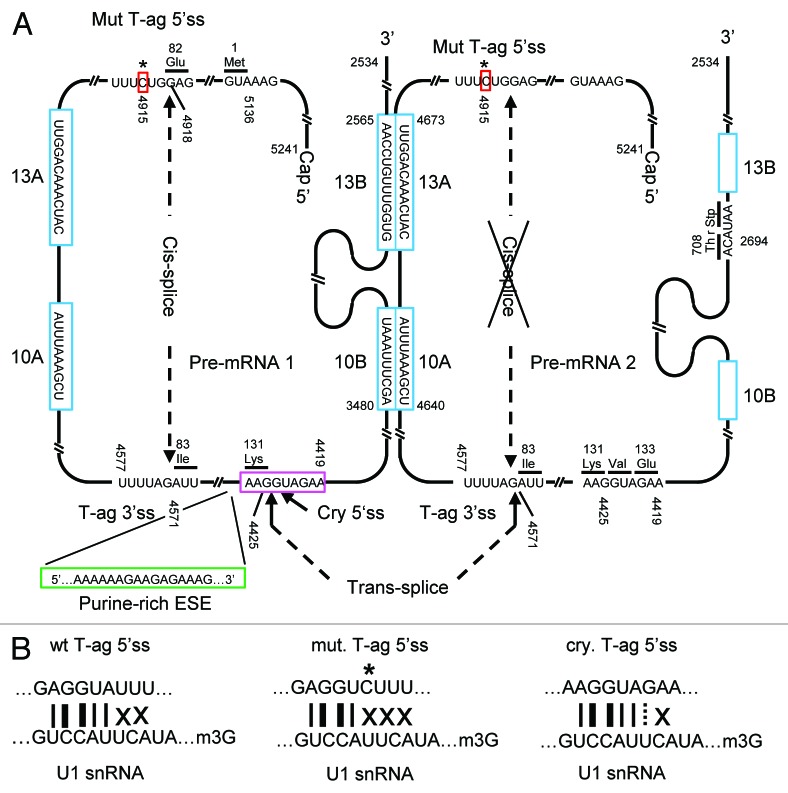Figure 6. Illustration of sT-ag mRNA synthesis by combining two T-ag pre-mRNA molecules via RNA trans-splicing. (A) The super T antigen mRNA is generated by combining the cryptic 5′ss (highlighted in magenta) of the first pre-mRNA molecule to the T-ag 3′ss of the second pre-mRNA molecule via RNA trans-splicing. Whereas the involvement of the T-ag 3′ss in trans-splicing abrogates cis-splicing of the second pre-mRNA, the first pre-mRNA is additionally spliced in cis using the T-ag 5′- and 3′ss. Besides the presence of a strong cryptic 5′ss, which is in 6 nts complementary to the U1 snRNA, trans-splicing is supported by several helper functions: First, two pairs of potential RNA dimerization domains (highlighted in cyan) of 10 (10A + 10B) and 13 (13A + 13B) complementary nucleotides in length which can generate steric proximity between the trans-splice sites; second, a putative purine-rich exonic splice enhancer sequence (highlighted in green) directly upstream of the cryptic 5′ss. In the strongly sT-ag expressing clones, trans-splicing is further supported by a A to C point mutation (highlighted in red) within the T-ag 5′ss, which weakens this ss by reducing the complementarity to the U1 snRNA from 5 to 4 nt in favor of the use of the cryptic 5′ss. (B) Complementarity between the wild-type T-ag 5′ss, the mutated T-ag 5′ss, and the cryptic 5′ss. Thin lines, A = U bp; thick lines, G ≡ C bp; dashed lines, GסU wobble bp; X, mismatch.

An official website of the United States government
Here's how you know
Official websites use .gov
A
.gov website belongs to an official
government organization in the United States.
Secure .gov websites use HTTPS
A lock (
) or https:// means you've safely
connected to the .gov website. Share sensitive
information only on official, secure websites.
